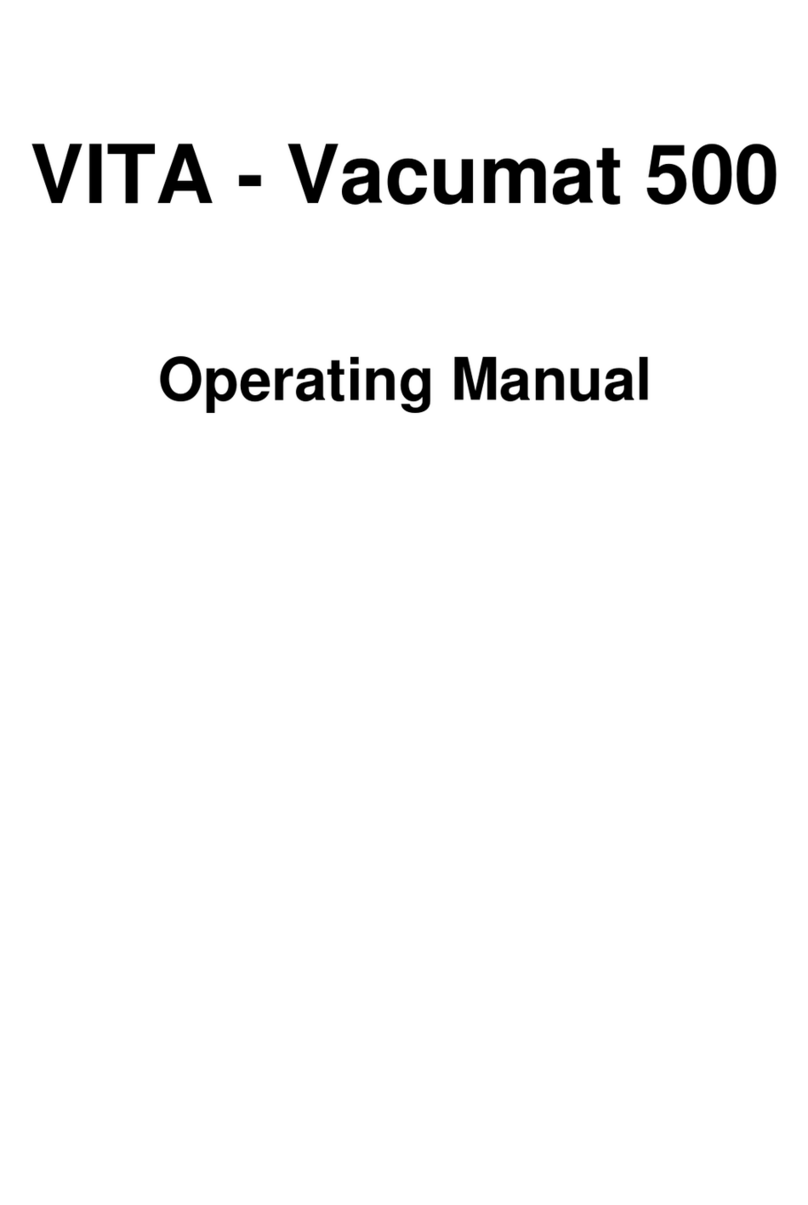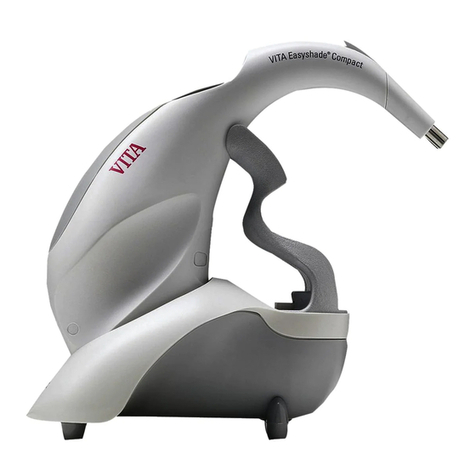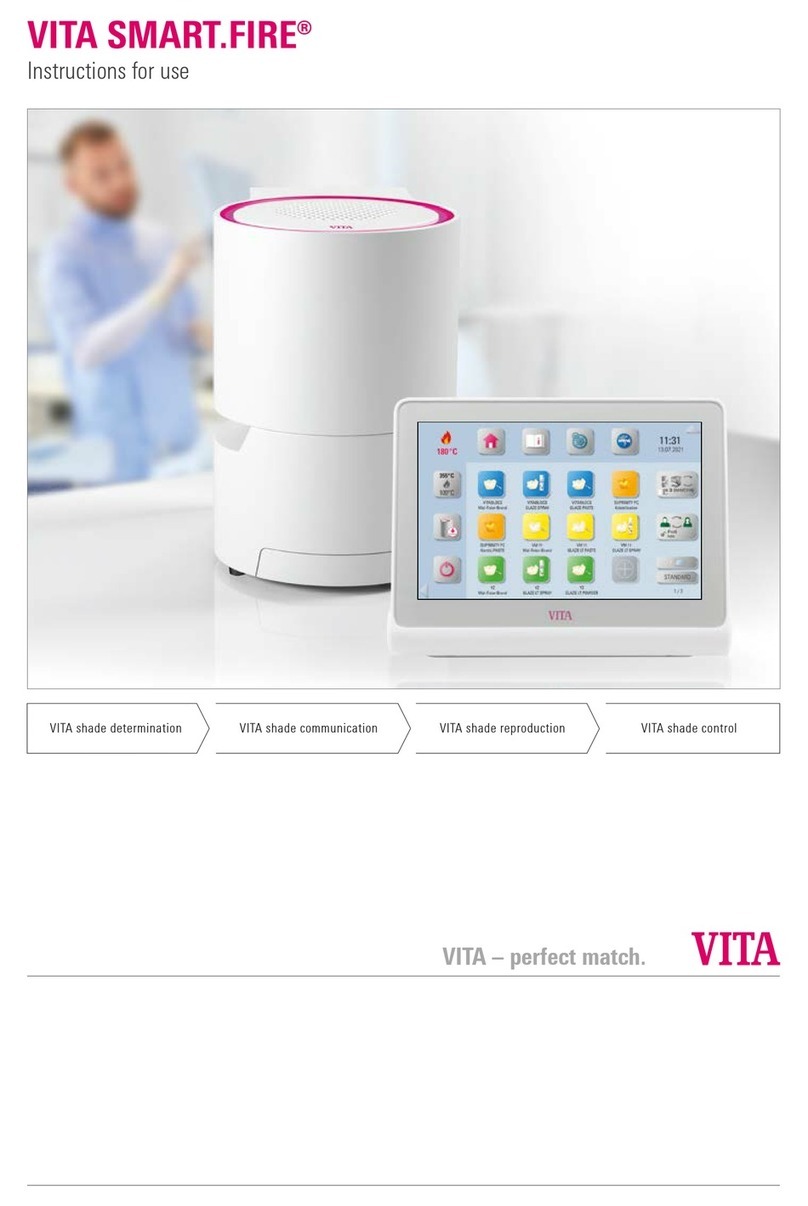V I T A E a s y s h a d e
1
Table of Contents
1. Getting started ................................................................................................................................. 2
1.1 Installation of the unit.....................................................................................................................2
1.2 Power-up ..................................................................................................................................... 2
1.3 Selecting Power-on defaults ........................................................................................................ 3
1.4 Applying an Infection Control Shield ............................................................................................ 6
2. Calibrating Easyshade .................................................................................................................... 9
3. Measuring a tooth .......................................................................................................................... 12
3.1 Measuring the base shade of a tooth ........................................................................................ 12
3.1.1 Normal measurement mode ................................................................................................... 13
3.1.2 Measurement averaging mode ............................................................................................... 15
3.2 Measuring tooth areas ............................................................................................................... 16
4. Verifying the shade accuracy of a restoration ............................................................................ 18
5. Measuring a shade tab ................................................................................................................. 22
6. Operating in extended mode .......................................................................................................... 23
6.1 Extended color information for a tooth ....................................................................................... 23
6.2 Extended color information for a restoration .............................................................................. 28
7. Care and maintenance .................................................................................................................. 29
7.1 Packing for transport ................................................................................................................. 29
8. Cleaning and disinfecting ............................................................................................................. 29
9. Appendix ........................................................................................................................................ 30
9.1 Self test ...................................................................................................................................... 30
9.2 Troubleshooting ......................................................................................................................... 32
9.3 Changing the lamp ..................................................................................................................... 34
9.4 Replacing the calibration block .................................................................................................. 34
9.5 Color measurement overview .................................................................................................... 36
9.6 Interpolated 3D-Master shades .................................................................................................. 41
9.7 Technical specifications ............................................................................................................. 42
9.8 Patents and trademarks ............................................................................................................. 42
9.9 Glossary .................................................................................................................................... 43
9.10 Warranty .................................................................................................................................. 44
Symbol Definitions
Attention, consult accompanying documents
Single use
Power ON / Power Off (push-push)

































